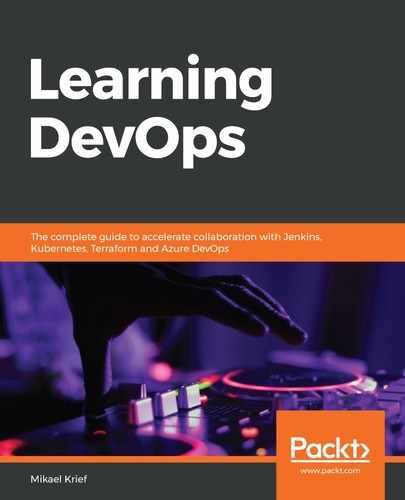One of the main pillars of DevOps culture is the implementation of continuous integration and deployment processes, as we explained in Chapter 1, DevOps Culture and Practices.
In the previous chapter, we looked at the use of Git with its command lines and usage workflow, and in this chapter, we will look at the important role Git has in the CI/CD workflow.
Continuous integration (CI) is a process that provides rapid feedback on the consistency and quality of code to all members of a team. It occurs when each user's code commit retrieves and merges the code from a remote repository, compiles it, and tests it.
Continuous delivery (CD) is the automation of the process that deploys an application in different stages (or environments).
In this chapter, we will learn the principles of the CI/CD process as well as its practical use with different tools such as Jenkins, Azure Pipelines, and GitLab CI. For each of these tools, we will present the advantages, disadvantages, and the best practices, and look at a practical example of implementing a CI/CD pipeline.
You will learn about the concept of a CI/CD pipeline. After this, we will explore the package managers and their role in the pipeline.
Then, you will learn how to install Jenkins and finally build a CI/CD pipeline on Jenkins, Azure Pipelines, and GitLab CI.
This chapter covers the following:
- The CI/CD principles
- Using a package manager in the CI/CD process
- Jenkins CI/CD implementation
- Azure Pipelines for CI/CD
- Using GitLab CI
